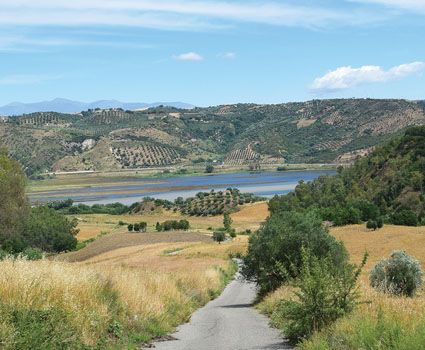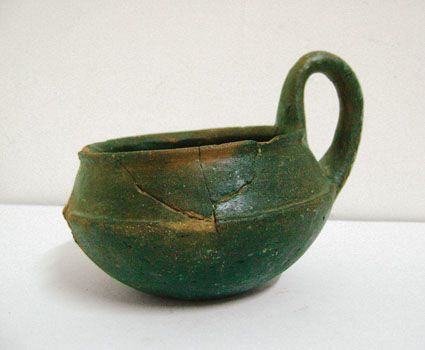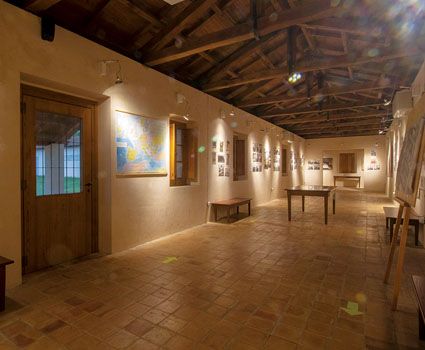
SAN DONATO DI NINEA - BISIGNANO
The route has milder gradients than the previous ones. It starts in San Donato di Ninea (658 m), passes the ancient Policastrello and soon reaches San Sosti (360 m), the village of the splendid Pettoruto Sanctuary and chestnut woods. From here the Ciclovia continues its descent, skirting the Rosa and Esaro rivers in a very fertile area marked by vineyards and olive groves; it passes Mottafollone and proceeds in the direction of Pianette (357 m), a hamlet of Roggiano Gravina, and then descends along the SP270 to reach Ferramonti, where the largest Italian concentration camp of the Fascist era and the Museum of Memory are located. From here we cross a long flat stretch of about 10 km that then climbs slightly to the historic centre of Bisignano (304 m), seat of one of the oldest dioceses in Calabria, where we find the Sanctuary of Sant'Umile and the ceramists' and luthiers' quarters.
ITINERARY AND DESTINATIONS

Download gpx
Places you must visit

Lake Tarsia Reserve
The Lake Tarsia Reserve is an important wetland area along the Crati River with a vast and diversified number of fish species. The reserve is home to many migratory birds. There are some remarkable diurnal birds of prey such as the brown kite, a nesting species, and the marsh harrier.

San Sosti Museum
The “Artemis” museum of the 56 municipalities of the Pollino National Park is located in San Sosti (CS), at the South-Western entrance to the Park. It is located in an ancient medieval prison, which was used as a detention centre until the year 2000. It was restored with funds from the Park Authority and now displays themed archaeological exhibits.

The Ferramonti Memorial Museum in Tarsia
Ferramonti was the largest Italian fascist concentration camp where Jews, anti-fascists and political refugees were interned. In 2004, the Ferramonti Memorial Museum in Tarsia was inaugurated at the site. The Museum was established as a memorial and to inform visitors about the history of the concentration camp.
KEY FACTS
climate
Stage for all seasons. Even in winter, the climate is temperate. In summer, it is preferable to avoid travelling it during the hottest hours of the day, especially in the stretch from Lake Esaro to Ferramonti di Tarsia.
Food, drink and accommodation
Farmhouses and B&Bs can be found along the route; in the towns and villages that you come across, where you can get water at public fountains, there is no shortage of restaurants and trattorias offering local products and typical cuisine.
Clothing
-
It is recommended to use a bike suitable for long distances, a gravel or mountain bike, also with pedal assistance. It may be appropriate to fit off-road (or mixed) tyres in the case of gravel. Although the route is on asphalt, it is a good idea to provide a set-up that allows you to safely tackle sections in the woods that may have mud and gravel in bad weather.
-
If you want to travel with a tent, you can stay in tent camping sites or campsites, agritourism and bivouac areas. To learn more please visit the Parks’ websites.
Accommodations facilities
-

Agriturismo Paglialonga
Bisignano -

Agriturismo Stillo
Tarsia -

AZIENDA AGRITURISTICA MIRACCO "IL MANIERO"
Santa Sofia D'Epiro -

Sogni d'Insonnia
San Sosti -

B&B Il Nido dell'Aquila
San Donato di Ninea
Restaurants
-

Sogni d'Insonnia
San Sosti -

Agriturismo Stillo
Tarsia -

Agriturismo Paglialonga
Bisignano -

AZIENDA AGRITURISTICA MIRACCO "IL MANIERO"
Santa Sofia D'Epiro
-

Green Travel
Cerchiara di Calabria









